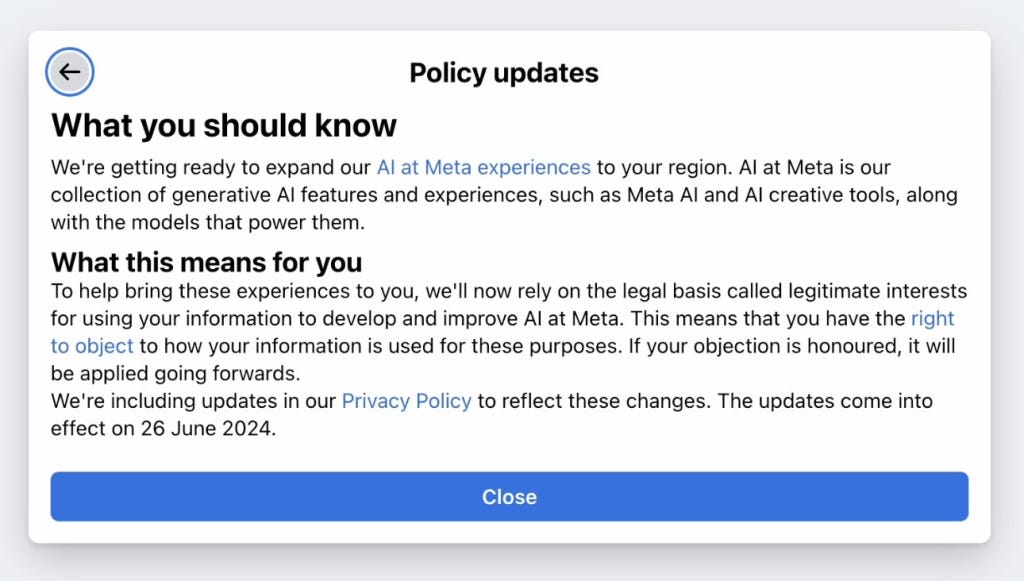Sludges and Meta
What are sludges? They are the opposite of nudges.
Now, I know, I know. That begs the inevitable question, so here's ChatGPT:
Ever felt like the universe was subtly guiding you towards better decisions? That’s a nudge! Think of it as a friendly elbow that steers you towards healthier or smarter choices without restricting your freedom. For example, putting fruits at eye level in a cafeteria encourages better eating habits.
Now, imagine wading through a swamp of paperwork and tedious processes just to get something simple done. That’s sludge! It’s the gunk that slows you down and makes life unnecessarily difficult. Think endless forms, confusing websites, and bureaucratic hoops.
In short, nudges help you breeze through life, while sludge makes you trudge. One’s your invisible buddy, the other’s the proverbial thorn in your side.
My favorite example, and one that I often use in class, is to say that The New York Times makes it easy to sign up to their newspaper. Visit the website, enter your credit card details, and you're good to go. Canceling, on the other hand, is jumping through a lot of hoops. It is better and easier than it used to be - but back in the day, you had to call them (at US times!) on an international number to cancel. That's pretty much a spot on example of "gunk that slows you down and makes life unnecessarily difficult". And so that's what sludge is.
And here's another great example of what a sludge is:
https://twitter.com/Tantacrul/status/1794863603964891567
The clue is in the first tweet itself - when the author says that "it's intentionally designed to be highly awkward in order to minimse the number of users who will object to it", that's a pretty important clue.
And the rest of the Twitter thread explains how (and how difficult) it is to object to your data being used to train Meta's AI models. Do go through it, regardless of whether you use Meta or not.
Here's another great example from later on in the thread:
There are two "Calls to Action" in this picture. The first is to simply close this notification. Can you spot where the "Close" button is?
The second "Call to Action" is the Right to Object. Can you spot where the "Right to Object" button is?
Would you call it a button?
Is it easy to find?
Is it a coincidence that one call to action is prominent and impossible to miss, while the other is in normal sized font, hidden in the middle of a lengthy paragraph, and looks like other hyperlinks that are not calls to action?
Sure, maybe it is just a coincidence. But I don't feel like buying the Taj Mahal today, thanks.
TMKK: the world will always be looking to trick you into making decisions you really didn't want to make. That's just life. And there will be times when you will be fooled. That too, is just life. But minimising the chances of being fooled is very much up to you - and studying behavioral economics helps you minimize those chances of you being fooled.


